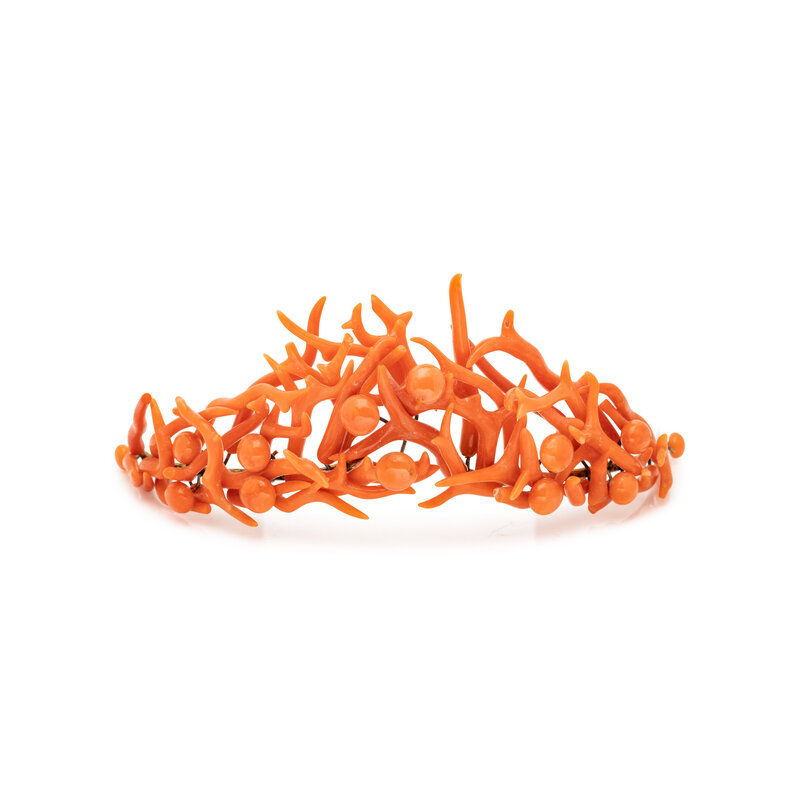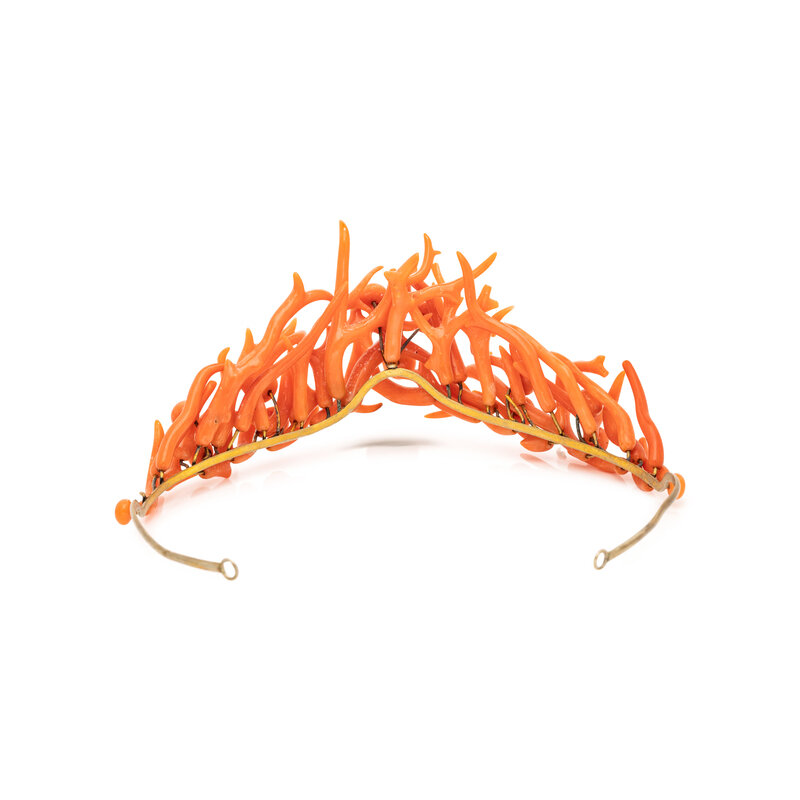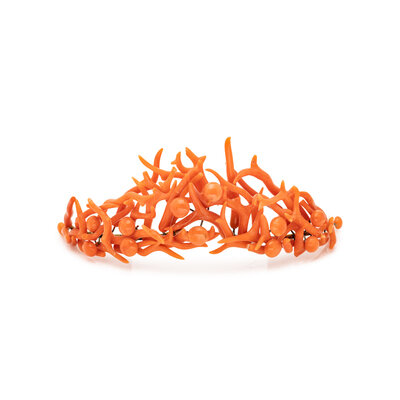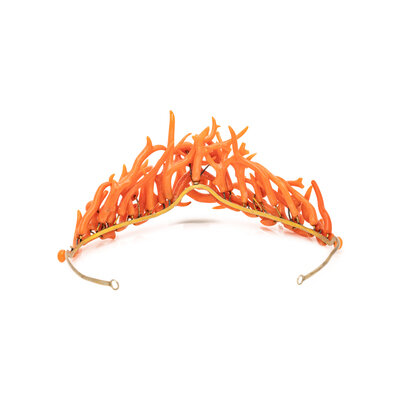Lot 10
ANTIQUE, CORAL TIARA
Sale 1337 - Important Jewelry
May 14, 2024
10:00AM CT
Live / Chicago
Own a similar item?
Estimate
$2,500 -
3,500
Price Realized
$8,890
Sold prices are inclusive of Buyer’s Premium
Lot Description
ANTIQUE, CORAL TIARA
Diadem of polished branch and button coral on a metal wire. Unsigned. Approximate width 5 1/2 inches. Height 2 inches.
Accompanied by a fitted box.
Accompanied by a fitted box.
Property from a Private Collection, Chicago, Illinois
Lot Essay by Archivists Delight LLC:
Coral tiaras initially became fashionable in the First Empire after they were worn by such European royalty as Empress Josephine (1763-1814). Her husband Napoleon Bonaparte’s (1769-1821) campaigns in Italy heightened French awareness of the beauty of Neapolitan coral. The gemstone’s deep red orange was seen as a colorful alternative to the pearl jewelry generally worn with white ball gowns.
Branch coral tiaras reached the height of their popularity in the 1860s. Designed to mimic laurel wreaths, their design subtly alluded to both chastity and virginity by referencing the nymph, Daphne. According to Greek mythology she was transformed into a laurel tree rather than succumb to the god Apollo’s sexual advances.
In London the foremost source of coral tiaras was the Phillips Brothers, jewelers who held royal warrants from King Edward VII (1841-1910). After winning a gold medal for their display at the 1867 Paris International Exhibition, they advertised that they had “the most complete collection of fine coral work in the world”. The Victoria and Albert Museum has in its collections an outstanding example coral branch tiara made by Philipps that is remarkably similar to this one. (https://collections.vam.ac.uk/item/O86510/tiara-and-case/).
Coral tiaras initially became fashionable in the First Empire after they were worn by such European royalty as Empress Josephine (1763-1814). Her husband Napoleon Bonaparte’s (1769-1821) campaigns in Italy heightened French awareness of the beauty of Neapolitan coral. The gemstone’s deep red orange was seen as a colorful alternative to the pearl jewelry generally worn with white ball gowns.
Branch coral tiaras reached the height of their popularity in the 1860s. Designed to mimic laurel wreaths, their design subtly alluded to both chastity and virginity by referencing the nymph, Daphne. According to Greek mythology she was transformed into a laurel tree rather than succumb to the god Apollo’s sexual advances.
In London the foremost source of coral tiaras was the Phillips Brothers, jewelers who held royal warrants from King Edward VII (1841-1910). After winning a gold medal for their display at the 1867 Paris International Exhibition, they advertised that they had “the most complete collection of fine coral work in the world”. The Victoria and Albert Museum has in its collections an outstanding example coral branch tiara made by Philipps that is remarkably similar to this one. (https://collections.vam.ac.uk/item/O86510/tiara-and-case/).
Condition Report
Contact Information
Auction Specialists



